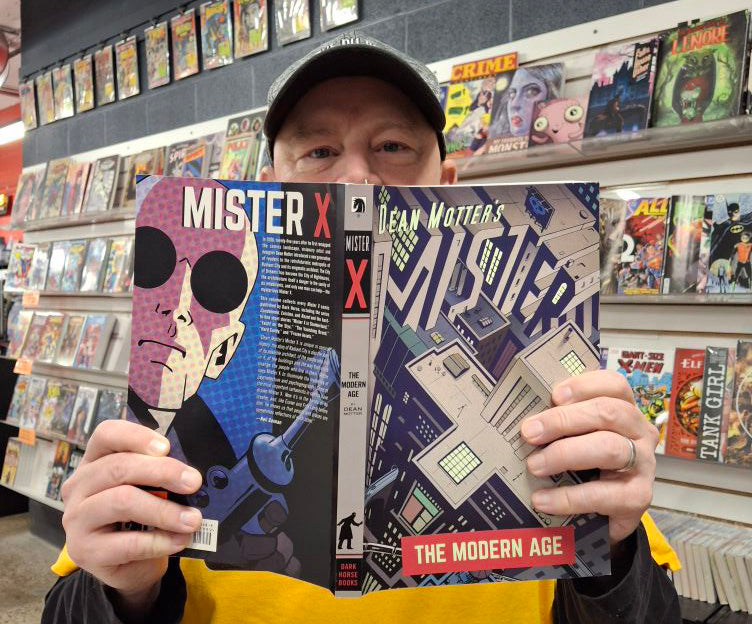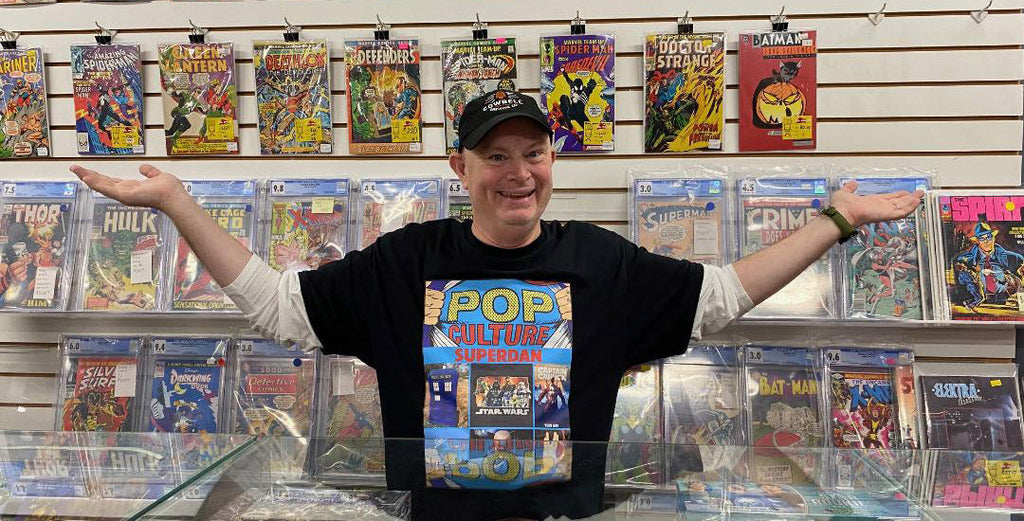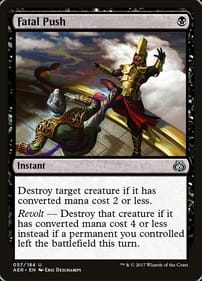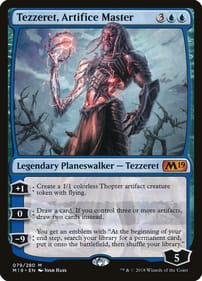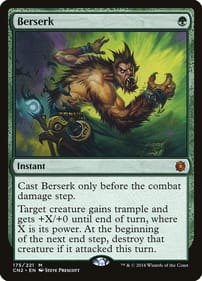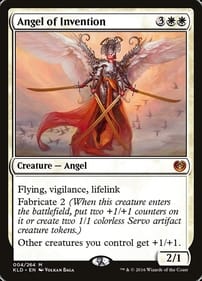GNG Assembles to Talk Mister X
By Dan Brown SPOILER WARNING: This column contains plot details from Dean Motter’s Mister X: The Modern Age, so stop reading right now if you value surprise! Here’s the lowdown on the most recent meeting of the L.A. Mood Graphic-Novel Group, which was held Saturday, June 14. The book: Dean Motter’s Mister X: The Modern Age, which collects all of the Mister X stories published by Dark Horse Comics. The discussion: The full range of opinions was represented around the table. There were people, like me, who love the book. There were others who felt meh – who didn’t give the book a thumb up or down, but a sideways thumb. And there were some who didn’t even feel motivated enough to finish reading the 360-page tome. Gord Mood, L.A. Mood’s co-owner, argued for including Mister X on the 2025 reading list at our January pitch meeting. He is among those who love it. Gord also brought some examples of Motter’s early work from Media 5 when he was a student at Fanshawe College. (Late Town Crier Bill Paul published that sci-fi fan publication.) I knew very little about the character beforehand. Knowing it had been praised for blending film noir, Art Deco and German Expressionism, I was expecting something ponderous and pretentious. Wrong! In my view, it’s an amazing graphic novel. DC can only wish that Batman were as cool as Mister X! It takes place in Radiant City, where it always seems to be 4 a.m. Its nickname is Somnopolis, because of the large number of residents who can’t sleep. The title character is possibly one of the original architects who founded Radiant City, it’s never made clear. The closest he gets to revealing his identity is when he states, “I want to fix my city. I want it to run as designed.” The problem? The city’s architecture is driving its residents insane. None of this, of course, is meant to be taken literally – which Gord’s business partner Carol Vandenberg touched on when she mentioned the humour of the book. The key, for me, was to not take anything in the book at face value. I appreciated how Mister X is a riot of invention. Some members of the group pointed out the many references in the story. For example, one robot who shows up is an homage to Gort from The Day The Earth Stood Still. 1984 is referenced, as well as CanCon icon Nash the Slash. The characters have the clipped speech of detectives in films from the 1940s: “You’re the man without a name,” an interrogator tells Mister X. “That’s what I’m called,” the mystery man replies. Even better, Motter adds his own creative touches, elevating The Modern Age to a level above a mashup. Mister X is an insomnalin addict, meaning if he doesn’t feed his habit, and falls asleep, he will automatically die. There are insomnatoriums on each block. Zombycillin is a drug that can bring the dead to life. Pscychetecture describes the style of buildings in Radiant City and how they torture the human mind. Further reading: Instead of reading, I would say watch Blade Runner or episodes from Batman: The Animated Series, as well as Tim Burton’s 1989 Batman movie. L.A. Mood’s Graphic-Novel Group meets the second Saturday of each month. Next month’s selection is Roaming, by cousin creators Jilliam and Mariko Tamaki. We continue our streak of Canadian books established in recent months! We’ll reconvene July 12 at the gaming tables in the store at 11 a.m. All are invited to come join the discussion! Dan Brown has covered pop culture for more than 32 years as a journalist and also moderates L.A. Mood’s monthly graphic-novel group.
New Star Wars Comic for Fans Only
By Dan Brown Although it’s well-made, Star Wars: A New Legacy No. 1 will likely appeal mostly to diehard fans of the interstellar epic. If you’re a devotee of characters like Valance, Black Krrsantan and Doctor Aphra, this is the comic for you. The presence of heroes from the movies – Luke Skywalker, Princess Leia, Han Solo – is felt here, but those old favourites aren’t actually part of the action. Instead, this comic contains a trio of tales which were created as vehicles for minor players in Marvel’s Star Wars universe. As Marvel begins a new phase of its Star Wars offerings, they’ve been promoted. Some members of this introductory issue’s cast have a long history. Valance, for instance, originated way back in 1978 in Star Wars No. 16. He was introduced as a self-loathing cyborg, which seemed to be a Marvel specialty back then – the publisher also had Deathlok on its roster in those days. This was years before Star Wars fans got a peek under Darth Vader’s helmet in The Empire Strikes Back. However, there’s no sign of Jaxxon, the giant green alien rabbit, who has gone from being a bad joke to beloved by fans. Hey, if people today can openly express their love for Jar-Jar Binks, then anything’s possible. Marvel got the rights to print Star Wars comics when the original movie debuted in 1977. It was an astute move, as some observers credit that title alone for keeping the company solvent in a financially precarious era. It’s hard to believe now, but over the decades the space fantasy’s appeal faded, so Dark Horse Comics eventually became the official headquarters for Star Wars comics. When Disney brought Marvel under its corporate umbrella, the licence soon reverted back to the House of Ideas. In the first section of A New Legacy, Valance appears on the trail of Doctor Aphra.For years, I wanted to see a Disney+ series featuring Aphra, but my prediction that the gonk droid would get a show before the rogue archeologist seems less and less like hyperbole as Aphra continues to go unloved by the Star Wars brain trust. Even one of her sidekicks, the wookiee called Black Krrsantan, made the leap to the small screen in the Book of Boba Fett without Aphra. She also appears in the back-of-the-book section in a story that inverts the old saying about letting the wookiee win at holographic chess. It turns out that advice doesn’t apply when one of the big, shaggy aliens is playing against a murder robot: “Let the droid win.” Sandwiched between those two stories is a narrative about the Empire’s Scar Squadron, who are also known as Task Force 99. This tale has a slight flavour of the Wild Bunch in that these stormtroopers are men out of time – they embody everything Imperial at a moment when the Rebellion is on the rise. They can’t understand why the crowds that used to cheer them want to rise up at the urging of rebel scum they consider terrorists. “We bring order, while all they have to offer this galaxy is chaos,” their sergeant laments in his inner monologue. This means the white-armoured soldiers – who operate on the outer rim of the outer rim – are on their way to becoming like the U.S. commander in Vietnam who famously said, “It became necessary to destroy the town to save it.” These grunts are on their way to setting fire to the universe so they can preserve it.Every Star Wars buff has their own favourite obscure characters from the vast universe created by George Lucas. If the one’s I’ve mentioned here are among yours, then you’ll enjoy A New Legacy. If not, you’ll want to give it a miss. Dan Brown has covered pop culture for more than 32 years as a journalist and also moderates L.A. Mood’s monthly graphic-novel group.
Why Didn’t Comics Version of Indiana Jones Set The World On Fire?
By Dan Brown All readers want from comics, I’ve said before, is compelling characters in interesting situations. Well, Indiana Jones – featured in the Dial of Destiny, which is in theatres now – is certainly a compelling character as played by Harrison Ford. And the makers of the Indy films have certainly been able to place him in some interesting (and deadly) situations. So how come the daring archeologist has never been able to sustain a comic title for long? I’m not saying Jones is a total washout as the headliner of a monthly series, but compared to adjacent properties, like Star Wars, he’s only been a blip in the grand sweep of comics history. Inspired by the success of 1981’s Raiders of the Lost Ark, It’s true Marvel Comics did publish more than 30 issues of The Further Adventures of Indiana Jones starting in 1983. Remember, those were the days when there wasn’t a property Marvel didn’t try to plunder. The gang from the bullpen attempted to cash in on every new fad, trend, craze and sensation that came along. How ridiculous did it get? This was the era when even the rock band KISS ended up in the pages of Marvel Comics. That’s right – for a brief moment, Gene Simmons was a Marvel protagonist, along with Spider-Man, the Hulk, Wolverine and the rest. I’m guessing an Indy comic seemed like a no-brainer. As it turned out, that first series would pale beside the Star Wars monthly, which ran 107 issues from 1977 to 1986 and is credited by some with keeping the House of Ideas afloat during lean economic times. And those Star Wars comics were . . . fine. They weren’t the worst stories in the world, although I would argue Russ Manning was doing far more interesting things in the same universe in the pages of daily newspapers with the Star Wars comic strip. And Marvel certainly invested in the venture, attaching talents like Howard Chaykin, Walt Simonson and John Byrne to bring Jones to life on the page. Yet the Further Adventures of Indiana Jones fizzled even before the original Indy trilogy wrapped up in 1989 with the Last Crusade. Here’s another comparison: Conan, Robert E. Howard’s pulp barbarian character, was also a Marvel Comics property during roughly the same period, and has been in the hands of one publishing house or another for decades since. Who knows how many Conan comic adaptations there have been to date? It’s also true Dark Horse Comics licenced Indiana Jones and his bullwhip in the 1990s for several more adventures. But those stories are only half-remembered now, if at all. So despite his enduring appeal on the big screen, why was Indy a comparative dud in comics form? I don’t have an all-encompassing answer, but the fact is some properties just don’t translate to other media. Some books don’t make good TV shows. Some movies don’t make good comics. Very few plays make for interesting films. (This is where I should also note that the Young Indiana Jones Chronicles, the network version of the character, barely lasted two seasons on ABC, so there may be something about the archeologist that just doesn’t work in other media.) Or perhaps it’s because the Indy films are the end product of pop culture, not the beginning. What I mean is, it was newspaper strips and adventure comics, along with silver-screen serials, that moved George Lucas and Steve Spielberg to come up with Indy in the first place. And maybe it just ends there: Dr. Jones was intended to be a creature of the big screen, so he is doomed never to transcend its limits. Dan Brown has covered pop culture for 30 years as a journalist and also moderates L.A. Mood’s monthly graphic-novel group.


